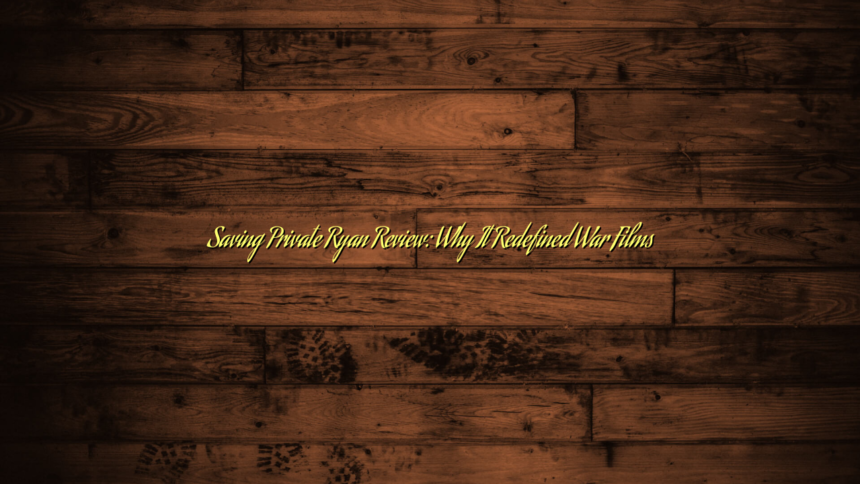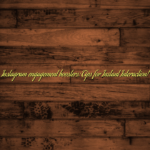Saving Private Ryan Review
The 12 months was 1998 when Steven Spielberg unleashed a cinematic masterpiece that might endlessly change the panorama of conflict movies. “Saving Non-public Ryan” burst into theaters, that includes a uncooked and harrowing depiction of World Conflict II that shocked audiences and critics alike. With its breathtaking cinematography, intense battle sequences, and highly effective storytelling, it set a brand new commonplace for the way conflict tales must be instructed. On this complete Saving Non-public Ryan overview, we delve into the movie’s impression on the style and why it stays a benchmark for filmmakers in the present day.
The Historic Context
To understand the importance of Saving Non-public Ryan, we should first perceive the historic context wherein it was launched. The late Nineteen Nineties was an period marked by an rising fascination with WWII, partly as a result of rising physique of literature and documentaries that chronicled the battle. Motion pictures like “Schindler’s Listing” (1993) and “The Skinny Purple Line” (1998) laid the groundwork for extra nuanced portrayals of conflict. Nevertheless, none would match the visceral realism and emotional depth that “Saving Non-public Ryan” would deliver to the desk.
The Realism of Conflict
One of many first facets to think about on this Saving Non-public Ryan overview is the movie’s dedication to realism. The opening scene, depicting the Omaha Seashore assault throughout D-Day, is usually heralded as one of the harrowing and genuine portrayals of battle ever captured on movie. Spielberg utilized a documentary-style strategy, using handheld cameras, muted colours, and a grainy texture to create a way of immediacy and authenticity.
Gripping Motion Sequences
The movie’s battle sequences aren’t simply visually gorgeous; they’re emotionally stirring. From the chaos of gunfire to the visceral sound design that immerses viewers within the battlefield, each second compels the viewers to really feel the nervousness, concern, and desperation skilled by troopers. The muddy trenches and bloody seashores aren’t mere backdrops; they turn out to be characters in their very own proper, highlighting the horrors and futility of conflict.
A Shift in Narrative Focus
In contrast to conventional conflict movies that usually glorify heroism, Saving Non-public Ryan pivots its narrative focus to discover the prices of conflict—each bodily and emotional. The movie follows a gaggle of males tasked with a seemingly unimaginable mission: to search out and produce residence Non-public James Ryan, whose brothers have all been killed in motion. This premise units the stage for an intimate exploration of camaraderie, sacrifice, and the ethical ambiguities of conflict.
Character Improvement and Performances
A big side of any Saving Non-public Ryan overview is the movie’s character growth. Every soldier embodies distinct personalities and backgrounds, which permits viewers to attach with them on a deeper stage.
The Ensemble Forged
The movie encompasses a stellar ensemble solid, together with Tom Hanks as Captain Miller, Edward Burns as Non-public Reiben, and Matt Damon as Non-public Ryan. Tom Hanks delivers a nuanced efficiency, portraying not only a chief however a person burdened by the burden of his obligations and the lives of his males. Hanks’ emotional vary provides depth to the movie, as audiences witness his inside struggles mirrored within the chaos surrounding him.
The Private Tales
The supporting characters, just like the steadfast Medic Wade (performed by Giovanni Ribisi) or the battle-hardened Sgt. Horvath (Tom Sizemore), provide glimpses into the complexities of the soldier’s expertise. Because the story unfolds, the boys’s private tales give weight to their mission, making the final word sacrifice really feel tragically poignant reasonably than noble.
Cinematic Methods
The groundbreaking cinematic strategies employed in Saving Non-public Ryan additional elevate this movie above standard conflict movies and contribute to its lasting legacy.
Gorgeous Cinematography
Cnematographer Janusz Kamiński’s work is nothing in need of extraordinary. Using pure gentle and practical colours creates an immersive expertise, making audiences really feel as in the event that they’re a part of the motion. The signature “shaky cam” type not solely heightens the strain but in addition locations viewers in a first-person perspective, forcing them to confront the chaos head-on.
The Sound Design
Sound performs a vital position in amplifying the movie’s emotional impression. From the deafening blasts of gunfire to the haunting cries of wounded troopers, the sound design provides one other layer of realism that deepens the viewer’s emotional engagement. The movie’s soundscape is as a lot a story-telling software because the dialogue itself.
Themes and Symbolism
An intensive Saving Non-public Ryan overview should additionally deal with its wealthy themes and symbolism.
The Human Value of Conflict
At its core, Saving Non-public Ryan is a meditation on the human price of conflict. It confronts viewers with the ethical ambiguities of navy service and the ache that conflict inflicts not solely on those that battle but in addition on households left behind. Spielberg doesn’t draw back from the ugly truths of fight, showcasing the brutality that usually will get glossed over in typical conflict narratives.
The Affect of Brotherhood
The evolving relationships among the many troopers function a poignant exploration of brotherhood and loyalty. Every soldier’s character contributes to the dynamic, highlighting the significance of human connection amidst chaos. The bond they kind alongside the best way makes the final word sacrifices sting with heightened emotional weight.
Legacy and Affect
It’s unimaginable to debate the impression of Saving Non-public Ryan with out recognizing its transformative affect on future conflict movies. Following its launch, filmmakers started to undertake its gritty realism, difficult conventional heroic portrayals in favor of extra advanced narratives that mirror the true nature of battle.
A New Customary
Motion pictures akin to “Black Hawk Down” (2001) and “1917” (2019) have drawn inspiration from Spielberg’s work, using comparable aesthetics and emotional depth. The movie’s affect goes past its rapid successors; it has redefined expectations for authenticity and storytelling in conflict cinema, encouraging audiences to demand extra than simply superficial motion.
Conclusion: Why You Ought to Watch
On this detailed Saving Non-public Ryan overview, it’s clear that this movie isn’t just one other conflict film; it’s an expertise that compels viewers to confront the ravages of human battle. Spielberg’s masterful course, mixed with intense performances and groundbreaking cinematography, create an unforgettable cinematic journey.
Actionable Insights
If you’re contemplating revisiting Saving Non-public Ryan, listed here are a couple of actionable insights:
- Have interaction with the Movie’s Themes: Pay shut consideration to the ethical complexities and emotional turmoil of the characters. Replicate on the broader implications of conflict as you watch.
- Discover the Cinematic Methods: Discover using lighting, camerawork, and sound design. Contemplate how these components work collectively to create a way of realism.
- Contextualize the Viewing Expertise: After watching, discover sources that debate WWII and its illustration in media. This may improve your understanding and appreciation of the movie’s historic significance.
In essence, Saving Non-public Ryan is a timeless piece that continues to resonate, guaranteeing that its impression on movie and society stays profound and lasting. Whether or not you’re watching it for the primary time or revisiting it years later, the movie guarantees to problem and have interaction, making it a must-see for any cinema lover.




